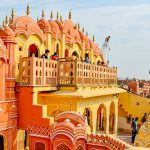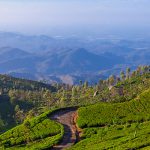A guide to India’s Golden Triangle
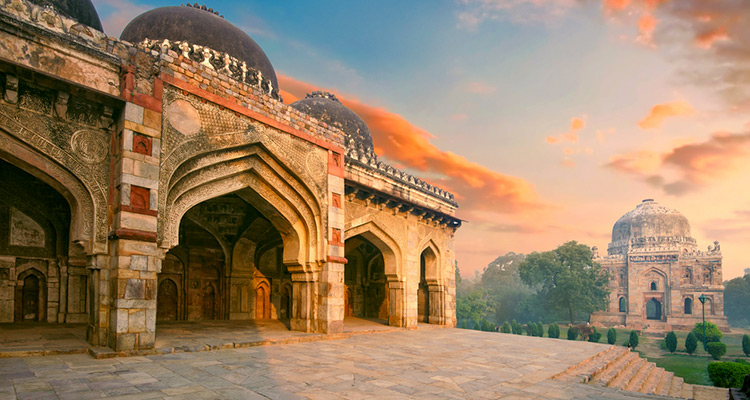
There are not many destinations in the world that stir the senses as instantly as India. This vast country in south-east Asia has a rice culture that engages more than just the eyes, with each state offering an experience unique to its neighbour. Wherever you choose to go, vsitors to India can expect to discover an amalgamation of colourful cities, exotic wildlife, staggering heritage sites, and culinary delights – all backed by an abundance of diverse traditions.
It can be a daunting prospect to immerse yourself in such an epic environment, especially for first-time visitors to Asia. India’s Golden Triangle, found in regal Rajasthan, is the perfect place to start. This 720km route connects Delhi, Agra, and Jaipur to showcase some of India’s most awe-inspiring architecture and modern-day markets, including a tiger-spotting stop at a national park.
Discover the highlights of a tailor-made tour of India’s Golden Triangle, from the towering Taj Mahal to the pink palaces of Jaipur.
Highlights of a holiday to the Golden Triangle
Delhi
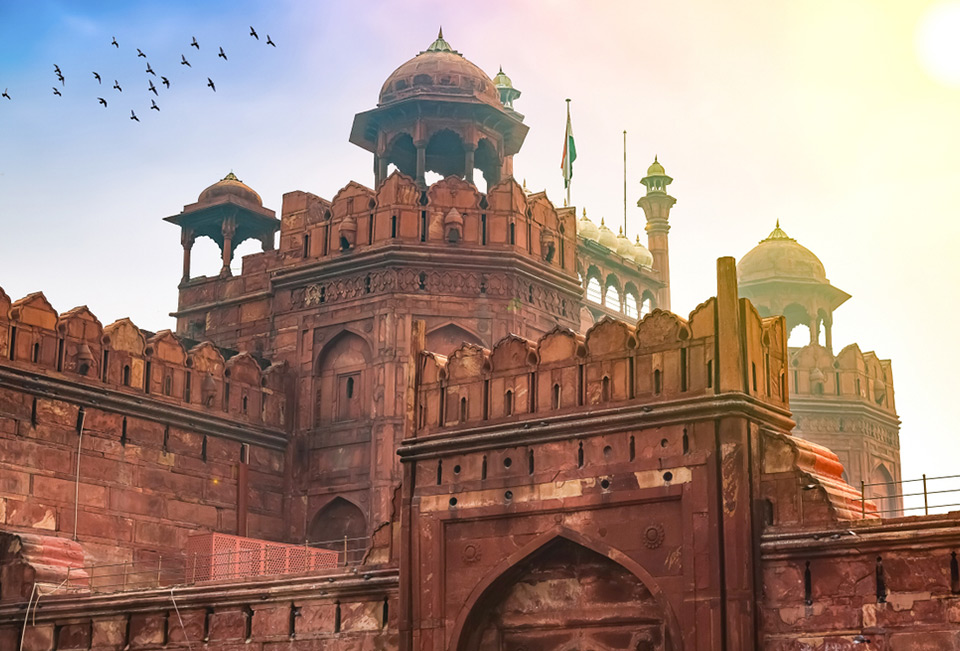
Delhi is split into two parts: Old Delhi and New Delhi. New Delhi, the official capital of India, is characterized by wide boulevards and the European architecture introduced by Sir Edwin Lutyen in the days of the British Raj. In contrast, Old Delhi is a network of busy roads and bustling bazaars, interlocked with narrow alleyways.
Highlights in Delhi include the Red Fort and Jama Masjid, the largest mosque in India. Tourists should prepare for a visit to the mosque by covering the shoulders and elbows and removing their shoes. You may also be required to cover your head. Following a visit to the mosque, you can take a rickshaw ride through the bazaar to experience the energy of a traditional local market. In New Delhi, tourist attractions include the Rajpath and Connaught Palace in the area known as Lutyen’s Delhi.
Agra
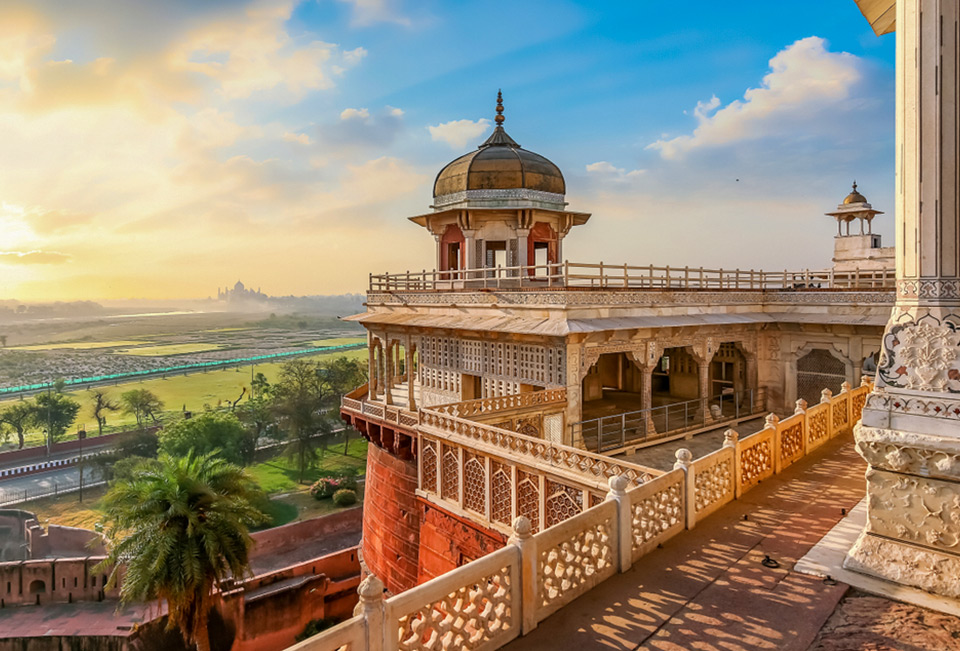
Just a half-day drive or train ride away is the city of Agra, a hundred times smaller than sprawling Delhi. Despite its small size, Agra is known all over the world as the home of the astonishing Taj Mahal. This area was a centre of the Mughal Empire in India and today is characterised by the amazing architectural legacy they left behind.
The Taj Mahal is certainly worthy of its status as one of the seven Wonders of the World. At its most beautiful at dawn or dusk, travellers can marvel at the sheer size and symmetry of this white marble mausoleum while watching the Taj Mahal change from pink to orange to gold in the shifting sunlight. Close by is Agra Fort, another UNESCO World Heritage Site recognized for its elaborate red walls and ornate marble interiors.
Jaipur

The final corner of the Golden Triangle is Jaipur, a historic location known as ‘the Pink City’ in contemporary culture. Jaipur earned this nickname in 1876 when the city buildings were painted pink in honour of a visit by Prince Albert, husband to England’s then monarch Queen Victoria. The diluted terracotta hues remain to this day which give the city an otherworldly atmosphere.
The markets in Jaipur are some of the best bazaars in India. Go on a guided tour through the maze of streets and discover the endless array of items that are on offer here, ranging from traditional street food like sweet milky chai to exquisite silver jewellery and uncountable sheaths of vibrant fabrics. There are also several historical sites in Jaipur that are sure to inspire awe: don’t miss the majestic Amber Fort that sits high above the city or the Jal Mahal, a water palace that appears to float on the surface of the lake. Perhaps most breath-taking is the unique façade of the Palace of the Winds.
Ranthambhore
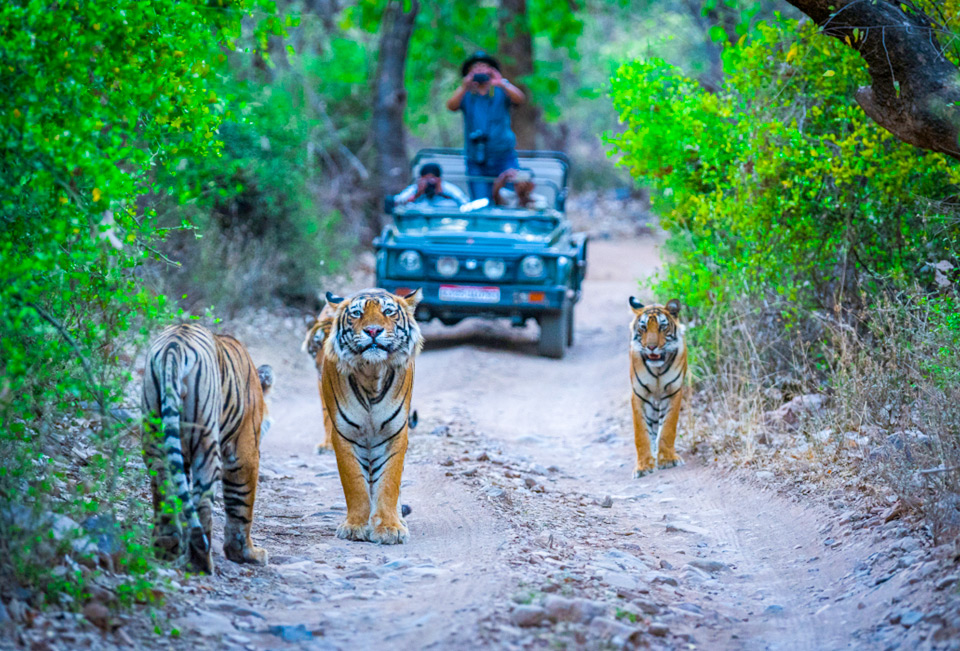
Not a point of the Golden Triangle but well within the lines is Ranthambhore National Park. If you have time to spare, make sure to include a couple of nights here. This area was once a hunting ground for the maharajas of Rajasthan but is now a protected wildlife zone where you can spot a variety of exotic animals hiding among the tropical plants. Guests can still get a sense of the park’s colonial past by choosing an old-world glamping site or luxury hotel as their accommodation.
Ranthambhore’s main claim to fame is that it is one of the best places in the world to spot tigers in the wild. Nothing quite prepares you for the power and pride that emanates from these regal creatures when you see them in the flesh. During a jeep drive through the park, tourists can also spot sloth bears, elephants, monkeys, peacocks, and a diverse range of other creatures big and small.

